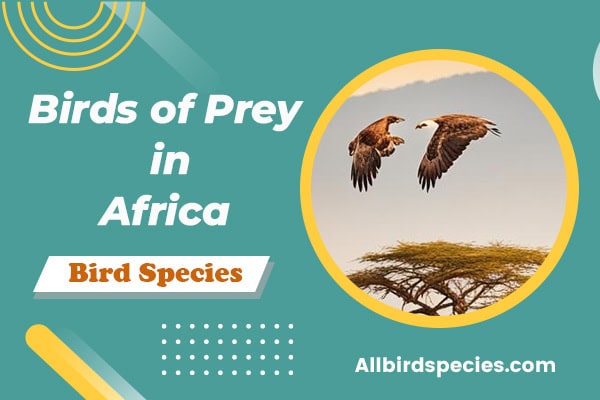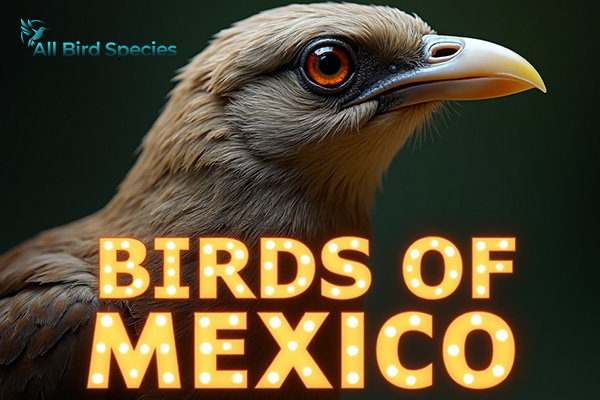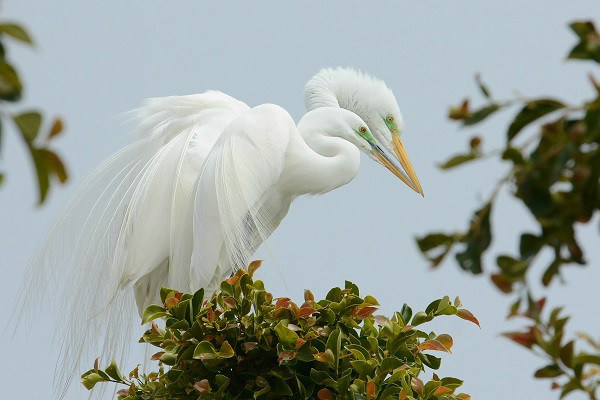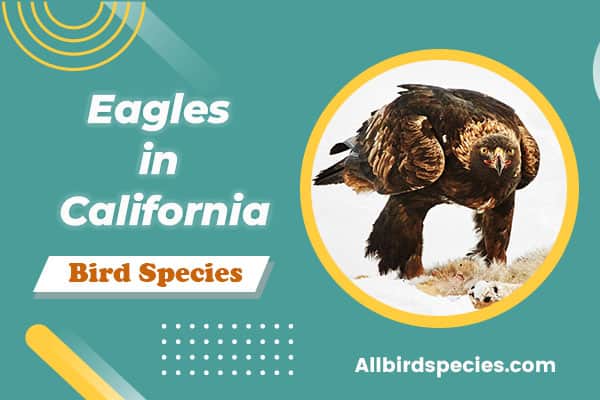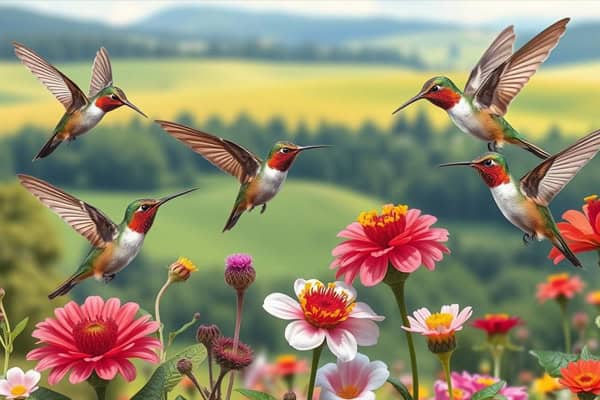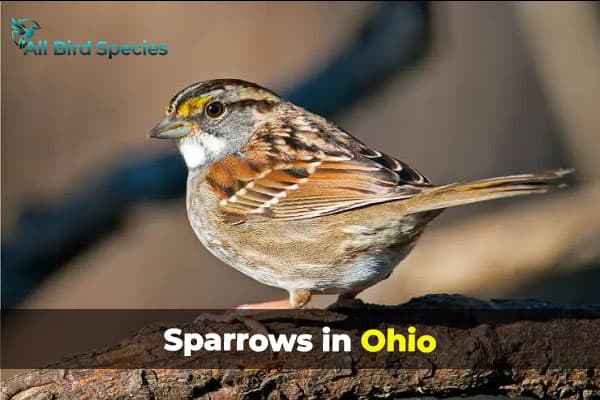Discover 7 Types of Hummingbirds In Virginia (With Pictures)
Virginia, a birdwatcher’s haven, boasts nearly 500 species, including Hummingbirds in Virginia. While seven species are listed, the Ruby-throated Hummingbird is the star you’re likely to see. These tiny birds, with their high metabolic rates and color-shifting feathers, are a marvel. Despite the list, other species are rare, straying during migration. Virginia’s not just about hummingbirds; its birding spots, from Chincoteague to Shenandoah, are diverse and abundant.
Here we’ll learn about 7 different types of Hummingbirds in Virginia
1. Ruby-throated Hummingbird
- Scientific name – Archilochus colubris
- Lifespan – 9 years (maximum recorded)
- Size – (7 to 9 cm)
- Weight – (2 to 6 g)
- Wingspan – (8 to 11 cm)
- Status – Least concern
The Ruby-throated Hummingbird is a tiny bird with a curved beak. Male ones have green on top, reddish throats, and dark faces. Females are green with white bellies.

They often make a “chee-dit” sound. Also, These hummingbirds make nests in trees like oak or birch. They use fluffy stuff like dandelion fluff and spider webs to build their nests. They lay one to three white eggs and sit on them for about two weeks. When the babies hatch, they stay in the nest for three weeks. Ruby-throated Hummingbirds drink nectar from red or orange flowers, like trumpet creeper and honeysuckle. They also eat sap, spiders, and bugs.
2. Rufous Hummingbird
- Scientific name – Selasphorus rufus
- Lifespan – 9 years (maximum recorded)
- Size – (7 to 9 cm)
- Weight – (2 to 5 g)
- Wingspan – (11 to 11.4 cm)
- Status – Near-threatened
The Rufous Hummingbird is a small bird with a straight bill. The males sport bright orange backs, bellies, and rusty tails, along with a red throat. Sometimes, males might have greenish backs. Females, on the other hand, have greenish backs and tails, faint rusty sides, and an orange spot on their throats. They often make loud chirping sounds.

These hummingbirds build nests in both coniferous and deciduous trees, as well as occasionally in vines and ferns. They use soft plant material and spider webs to construct their nests, blending them with lichen, moss, and bark for camouflage. The female lays two or three white eggs, which she sits on for about two weeks until they hatch. The young birds stay in the nest for another two to three weeks before venturing out.
Rufous Hummingbirds mostly feed on nectar, favoring flowers like penstemon, scarlet gilia, columbine, and others. They also get protein from insects. Despite once being fairly common, their population has decreased by 67% in the last fifty years, now totaling around 22 million individuals. Without conservation efforts, they face a real risk of extinction due to habitat loss and climate change affecting their breeding areas.
3. Calliope Hummingbird
- Scientific name – Selasphorus calliope
- Lifespan – 8 years (maximum recorded)
- Size – (8 to 9 cm)
- Weight – (2.3 to 3.4 g)
- Wingspan – (10.5 to 11 cm)
- Status – Least concern
The Calliope Hummingbird, a tiny bird with a straight bill, boasts magenta throat feathers for males and bronze-green upper parts with greenish flanks. Females exhibit a bronze-green back and whitish to peachy underparts. When foraging, they emit a chip sound.

These hummingbirds in Virginia construct their nests in evergreen trees, cleverly resembling pine cones. Made from soft plant material and bound with spider webs, the nests are camouflaged with bark, lichen, and moss. The female lays two white eggs, incubating them for about two weeks before the hatchlings spend another 18 to 21 days in the nest.
Feeding primarily on nectar from tubular flowers, they occasionally supplement their diet with insects and sap. While the Calliope Hummingbird’s global population remains stable, a slight decline has been noted since 1968, with an estimated 4.5 million breeding individuals. Despite their relative abundance, their small wintering grounds leave them vulnerable to habitat changes and diseases.
4. Buff-bellied Hummingbird
- Scientific name – Amazilia yucatanensis
- Lifespan – 11 years (maximum recorded)
- Size – (10 to 11 cm)
- Weight – (4 to 5 g)
- Wingspan – (14 to 15 cm)
- Status – Least concern
The Buff-bellied Hummingbird, a medium-sized bird, flaunts metallic bronze-green upperparts and a black-tipped red bill. Males boast a green throat, rusty tail, and, true to their name, a buff-colored belly. Females resemble males but with muted tones.
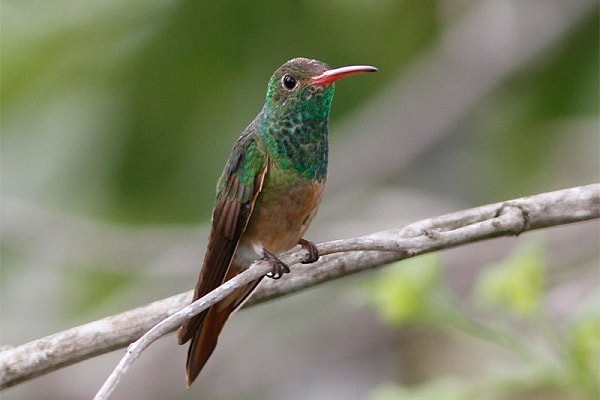
These hummingbirds nest in various trees like papaya and willow, crafting cup-shaped nests from plant materials like flowers, bark, and spiderwebs. They typically lay two white eggs per clutch, incubating them for about two weeks before the chicks spend another week or so in the nest.
Buff-bellied Hummingbirds sustain themselves on flower nectar and small insects, showing a preference for native blooms like tropical sage and coral bean. These birds contribute to pollination as they flit from flower to flower, benefiting plants and ecosystems alike.
5. Allen’s Hummingbird
- Scientific name – Selasphorus sasin
- Lifespan – 6 years (maximum recorded)
- Size – (7.5 to 9 cm)
- Weight – (2 to 4 g)
- Wingspan – (10 to 11 cm)
- Status – Least concern
The Allen’s Hummingbird, a petite and slightly stocky bird, features a straight bill. Males sport a reddish-orange throat, a metallic bronzy-green back, and a copper-colored belly and tail. Females, less vibrant in appearance, exhibit a metallic bronzy-green back, copper-colored flanks, and a reddish-orange patch on the throat.
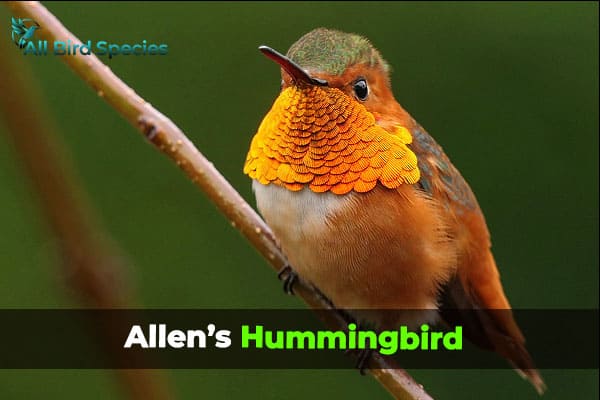
These hummingbirds emit a sharp tick sound while feeding, which is their most common vocalization. Allen’s Hummingbirds primarily feed on flower nectar and tiny insects, contributing to pollination as they flit among flowers. Their presence adds vibrancy to their habitats, highlighting the delicate balance of nature.
6. Black-chinned Hummingbird
- Scientific name – Archilochus alexandri
- Lifespan – 11 years (maximum recorded)
- Size – (8 to 9 cm)
- Weight – (2.3 to 4.9 g)
- Wingspan – (10 to 11 cm)
- Status – Least concern
The Black-chinned Hummingbird is a slender, unassuming bird with a straight bill. Male individuals feature a purple throat that often looks black, along with a white spot behind the eye and whitish-grey underparts, accented by dull metallic green on the flanks. Females, meanwhile, display a whitish throat, pale metallic green upperparts, and whitish underparts, with a light green wash on the flanks.
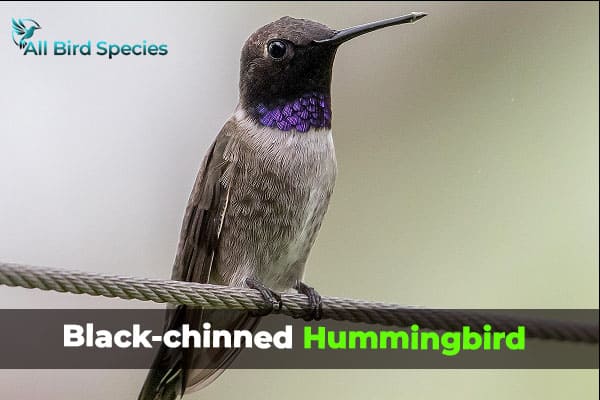
Furthermore, These hummingbirds produce chip and tick calls, which are characteristic sounds of their species. While their appearance may seem nondescript, their role in pollination and ecosystem health is vital. With their delicate beauty and subtle hues, Black-chinned Hummingbirds enrich the natural world around them.
Check Our Previous Articles:
| Where Do Hummingbirds Sleep at Night |
| Hummingbirds In Kansas |
| Identifying Hummingbird Nests |
| Hummingbirds in Maryland |
7. Anna’s Hummingbird
- Scientific name – Calypte anna
- Lifespan – 8 years (maximum recorded)
- Size – (10 to 11 cm)
- Weight – (3 to 6 g)
- Wingspan – (10 to 12 cm)
- Status – Least concern
Anna’s Hummingbird, a medium-sized species, sports a dark, straight bill. The male boasts a striking rose-pink throat and crest, contrasting with a metallic green back. Females, meanwhile, exhibit a similar metallic green hue above, with a touch of pinkish-red on the throat.

These hummingbirds construct their nests in trees and shrubs on horizontal branches, often opting for oak or eucalyptus trees. They fashion cup-shaped nests using soft plant materials like willow down, feathers, and spiderwebs, camouflaging them with moss and lichen. Anna’s Hummingbird typically lays two white eggs per clutch, incubating them for about 16 days before the chicks spend roughly 20 days in the nest.
Their diet primarily consists of nectar from flowering plants such as currant and manzanita, with occasional foraging on invasive species like eucalyptus. Insects and sap also contribute to their diet. Anna’s Hummingbird plays a crucial role in pollination, showcasing the delicate balance of nature in their habitat.
Frequently Asked Questions
Q1. What time of year are hummingbirds in Virginia?
Hummingbirds typically arrive in Virginia during the spring, around March or April, and stay until the fall, departing around September or October.
Q2. Do hummingbirds live in Virginia?
Yes, hummingbirds do live in Virginia. They are migratory birds that visit the state during the warmer months of the year.
Q3. How do you attract hummingbirds in Virginia?
To attract hummingbirds in Virginia, you can plant native flowering plants that they prefer, such as trumpet creeper, bee balm, or cardinal flower. Additionally, you can set up hummingbird feeders filled with a sugar water solution (4 parts water to 1 part sugar) and keep them clean and well-maintained.
Q4. When should you take up hummingbird feeders in Virginia?
It’s recommended to take up hummingbird feeders in Virginia during the fall, around late September to early October, when hummingbirds begin their migration south. This prevents them from becoming dependent on feeders and encourages their natural migratory behavior.


